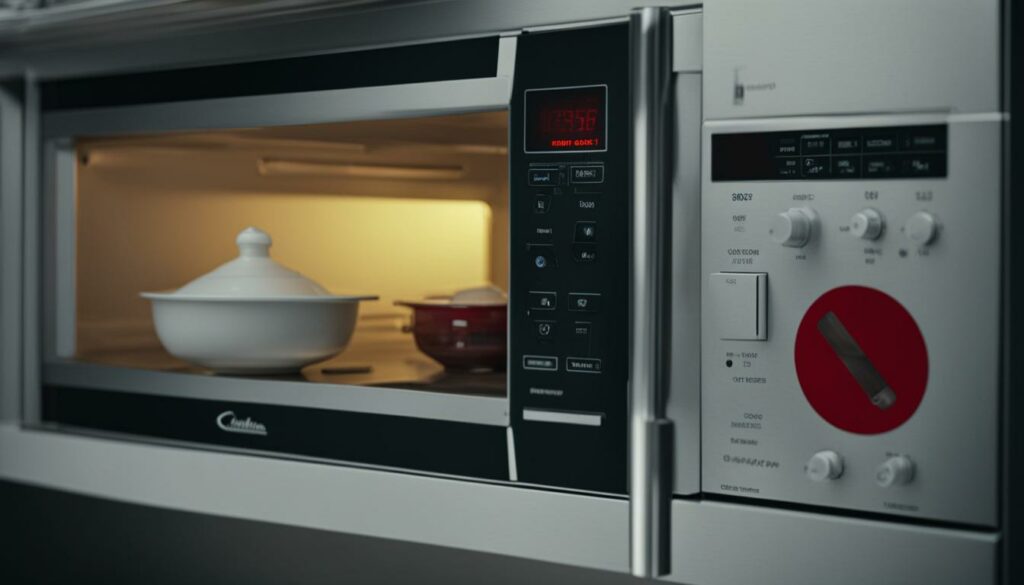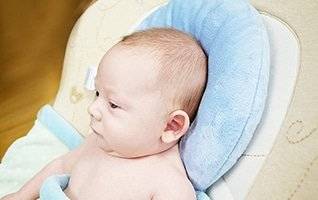If you’re planning a trip with your baby, you may have considered using a baby travel pillow to provide comfort and support during the journey. However, as a parent, your top priority is your baby’s safety.
In this section, we will address the safety concerns surrounding baby travel pillows. We will discuss the potential risks of suffocation and explore the recommendations from the American Academy of Pediatrics (AAP) in relation to safe sleep practices and Sudden Infant Death Syndrome (SIDS).
Key Takeaways:
- It’s important to prioritize your baby’s safety when considering the use of travel pillows.
- Baby travel pillows can pose a risk of suffocation if not used properly.
- The American Academy of Pediatrics provides recommendations for safe sleep practices and SIDS prevention.
- Choosing a safe and supportive travel pillow is crucial for your baby’s comfort and safety.
- By following the guidelines outlined in this guide, you can ensure a safe and enjoyable travel experience for your little one.

Understanding the Potential Risks
If you’re considering using a baby travel pillow, it’s essential to understand the potential risks, including the danger of suffocation. While some baby travel pillows, such as neck support pillows, may seem like a good option for providing comfort and support to your infant, they can pose a risk if not used correctly.
Infants are particularly vulnerable to suffocation, especially when it comes to pillows and other soft bedding. According to the American Academy of Pediatrics (AAP), soft bedding is a significant risk factor for Sudden Infant Death Syndrome (SIDS).
While baby travel support pillows may be marketed as safe, it’s crucial to be aware of the risks associated with their use. These pillows are often made with soft materials that can pose a suffocation hazard if they come into contact with your infant’s face.
If you do choose to use a baby travel pillow, it’s essential to select one that is specifically designed for infant use and provides adequate support without creating a suffocation risk. Look for pillows that are firm and have a breathable cover to help reduce the risk of suffocation.
Safe Travel Tips for Infants
Traveling with your baby can be a wonderful experience, but it’s important to prioritize safety. Here are some tips to ensure safe travels:
Using Car Seat Pillows
When traveling by car, your baby’s car seat should always be used. A car seat pillow can provide additional support and comfort during long car rides. However, it’s important to choose a pillow that is specifically designed for use with car seats and that does not interfere with the proper positioning of the car seat harness. Always follow the manufacturer’s instructions and guidelines for use.
Using Stroller Pillows
Stroller pillows can provide added comfort and support for your baby during walks and outings. Look for a pillow that can be securely attached to the stroller and that does not interfere with the proper positioning of the stroller harness. Avoid using pillows that are too bulky or thick, as they can interfere with the stability of the stroller.
Using Airplane Pillows
When traveling by airplane, a travel pillow can help your baby sleep comfortably during the flight. Look for a pillow that is lightweight and compact, as space is often limited on planes. It’s also important to choose a pillow that meets safety standards and does not pose a suffocation risk. Never leave your baby unattended with a travel pillow and be sure to follow the manufacturer’s instructions for use.
The AAP Safe Sleep Recommendations
When it comes to ensuring the safety of your baby during travel, it is crucial to follow the American Academy of Pediatrics (AAP) safe sleep recommendations. These guidelines are specifically designed to minimize the risk of Sudden Infant Death Syndrome (SIDS) and ensure your baby sleeps safely and soundly, even when away from home.
The AAP recommends that infants be placed on their backs to sleep for every sleep, including naps and nighttime sleep, until they are one year old. This position has been shown to reduce the risk of SIDS by as much as 50%. Additionally, the AAP recommends using a firm, flat sleep surface, such as a crib or bassinet, for your baby to sleep on.
Other Safe Sleep Recommendations from the AAP:
- Avoid bed-sharing with your baby, particularly if you have consumed alcohol, drugs, or medications that make you drowsy
- Avoid exposing your baby to smoke, including secondhand smoke
- Keep soft objects, loose bedding, and other unsafe sleep materials out of your baby’s sleep area
- Do not use wedges, positioners, or other devices marketed to help keep your baby in one position on a sleep surface
By following these safe sleep recommendations, you can help ensure that your baby remains safe and comfortable, even during travel. It is essential to remember that these guidelines apply to all sleep situations, including travel. If you have any questions or concerns about safe sleep practices, be sure to consult with your pediatrician.
Choosing Safe and Supportive Travel Pillows
When it comes to selecting baby travel pillows, safety should always be your top priority. Not all travel pillows are created equal, and some may pose potential risks to your infant. To ensure a safe and comfortable travel experience for your little one, keep the following features in mind when selecting a baby travel pillow:
- Safety certifications: Look for pillows that have been tested and certified by reputable safety organizations, such as the Consumer Product Safety Commission (CPSC).
- Proper fit: Make sure the pillow is designed to properly fit your baby’s age and size. An ill-fitting pillow can pose a risk of suffocation or other injuries.
- Supportive design: A good baby travel pillow should provide adequate support for your infant’s head and neck, helping to prevent discomfort and minimize the risk of injury.
- Easy to clean: Look for pillows with removable, machine-washable covers to make cleaning and maintenance a breeze.
Here are some safe and supportive baby travel pillow options:
| Brand | Product Name | Safety Certifications | Price Range |
|---|---|---|---|
| Boppy | Noggin Nest Head Support | CPSC certified | $10-$15 |
| Trunki | Snuggle Bundle Neck Pillow and Blanket Set | CPSC certified | $20-$25 |
| Lulyboo | Baby Lounger To Go | CPSC certified | $60-$70 |
Remember, no matter which baby travel pillow you choose, always follow the safety guidelines provided by the manufacturer and the American Academy of Pediatrics to ensure a safe and enjoyable travel experience for your little one.
Conclusion
When it comes to traveling with your baby, safety should always be your top priority. While travel pillows can offer comfort and support, it is essential to choose products that adhere to safety standards and guidelines. Remember to always follow the safe sleep recommendations provided by the American Academy of Pediatrics and select travel pillows that are designed to provide adequate support without posing a risk of suffocation.
By carefully selecting safe and supportive travel pillows and following our practical tips for ensuring infant travel safety, you can ensure a comfortable and enjoyable journey for both you and your little one. Happy travels!




